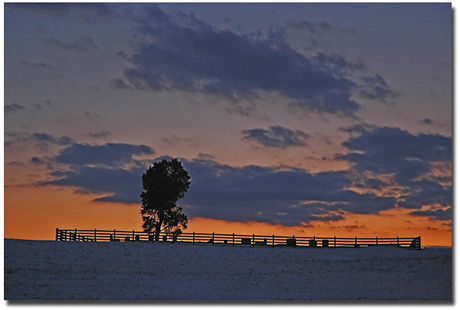What We Have Eyes to See
 On a recent drive across the east end of the county, my wife and I took roads we’d traveled often, before we moved to Goose Creek. Fallen leaves covered these once familiar twists and turns, and on this particular trip, four small family cemetery plots stood out against the deep blue of the fall sky. I usually keep my eyes open to this kind of detail, but I’d never noticed these old graveyards before on this route and wondered why.
On a recent drive across the east end of the county, my wife and I took roads we’d traveled often, before we moved to Goose Creek. Fallen leaves covered these once familiar twists and turns, and on this particular trip, four small family cemetery plots stood out against the deep blue of the fall sky. I usually keep my eyes open to this kind of detail, but I’d never noticed these old graveyards before on this route and wondered why.
Family graveyards are common as you drive around Floyd County, and many show signs of great age as well as regular care from those still living on or near the family farm. Most of these plots are fenced to keep out cattle; some are a short walk from the county road and invite a respectful visitor to stop and contemplate his own mortality.
Often, these little rectangles of tombstones are no larger than the foundation of a country barn and contain no more than a few dozen graves. If you look closely at the grave markers, you’ll likely see only two or three surnames among them. Not uncommonly, like the ones we saw on our recent drive, these burial groves are perched on the crest of the hill. It is from such high places that those left behind who go to remember their loved ones find a place of tranquil solitude with a far horizon, open sky and a good view of heaven.
Years back, I hiked alone in a remote Wythe County valley that once had bustled with human lives in farmhouses, barns and outbuildings. All of the structures there had hewn limestone foundations, likely from a nearby quarry. Decades earlier, forest had taken back the land when the last caretaker had passed on. Standing beside the remnants of what had been a spring house, behind me the base of a mud-chinked rock chimney remained, overgrown with vines. Nearby, on a knoll above the scattered foundation of the house, a spreading oak of great size and age made me wonder if it might not have been there when this valley community was young. I climbed the hill to stand in its shade and look down on what little remained of the old settlement below me.
In the dappled shade of its branches and among the tall grasses, the old oak sheltered a dozen headstones hewn from the same stone as the springhouse and chimney. Each stood out of plumb, round-shouldered and crusted with gray-green lichens. Inscriptions of birth and death on the soft stone were lost to the weathering decades.
At first, I thought it sad that such a place lay uncared for and abandoned. But by the time I lifted my pack and walked on, I had decided I would chose to rest in just such an overgrown place as this with those I’d loved. In its dignified decay, this silent place was fitting tribute to families who had cleared this forest, made their lives here, and now rested under oaks and broom sedge—ashes to ashes, forest to forest. I’d much prefer to be shrouded in brambles and lichen than to be interred in those pristine places of mirror-polished marble and manicured lawn I had visited in refined suburban burial preserves where people lay next to folks they’d never known.
They hold a special place in my heart, these rustic graveyards where families rest together in death. They represent deep roots and a fixed history that I never had. And so I was surprised to discover that I’d driven past invisible cemeteries that suddenly now, our eyes could see clearly. Our vision hadn’t changed; it’s only that our perception is age-appropriate. A child looking out the window traveling with us over that same stretch of road would have seen all the swing sets and tree houses; a teenager would have noticed the hot cars (or more likely trucks) behind the country houses.
When we first moved to the county looking for home, what my wife and I clearly noticed then were the houses and outbuildings, and especially the realtors’ signs. And now, it’s the cemeteries that catch our attention—which is only right, I guess. The days of tricycles, tree houses and hot trucks have passed. We’ve found our house and our home. And we know where we’re moving next—down the road of time—and see that end more clearly every day.
I’m seeing that life has a way of revealing its mysteries to our eyes when we’re ready for them.

